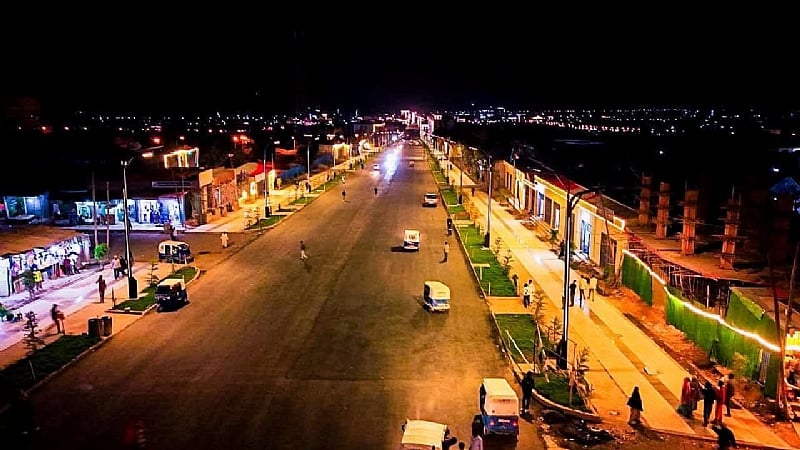Over the past three decades, Jigjiga , the capital of the Somali Regional State in Ethiopia has experienced a turbulent, yet transformative journey. From a forgotten frontier town mired in conflict, repression, and neglect, amd surrounded by military garrisons to a symbol of resilience, modern development, and multicultural revival, Jigjiga’s story is one of pain, reform, and remarkable renewal.
In the 1990s and early 2000s, Jigjiga was a dusty administrative military outpost. Infrastructure was rudimentary; and public services were minimal. Ethnic tensions, poverty, and cross-border instability dominated life.
But the darkest chapter came under the rule of Abdi Mohamud Omar “Abdi Iley”, who rose to power in 2010 as the regional president under the ruling EPRDF coalition. His administration brought widespread human rights violations, political purges, suppression of dissent, and widespread fear.
During this time, the city was symbolically and literally in decay, simply a military outpost where Police searches for new comers each day, “During the Abdi Iley era, If one of your relatives come from other districts, or mainly from bordor towns, you may get arrested for hosting them , Jigjiga was like a military command post , not a city where people could invest, or live freely” Yusuf said.
As late BBC Somali journalist Cawke described it when he coined Jigjiga’s well-known phrase “Lugaha dhiiqo ku leh, madaxana boodh” or literrally meaning “feet sunk in mud, head covered in dust” capturing the lack of infrastructure and hopelessness that blanketed Jigjiga city.
In August 2018, this chapter came to an abrupt and violent end. Following rising tensions with the federal government, mobs looted non-Somali properties and churches in the city in what became known as “August 4 unrest.” The violence left scars, but it also marked the fall of the repressive regime.
In the aftermath of Abdi Iley’s fall and arrest, the federal government took control of the region briefly to restore peace. With the coming of Prime Minister Abiy Ahmed’s reformist wave, new leadership emerged in Jigjiga.
Mustafe Omer “Mustafe Cagjar” was appointed as president. He ushered in a period of political reform, inclusivity, and healing. Former prisoners were released, the Liyu Police were restrained and restructured, and diaspora were encouraged to return and invest, putting the freedom of expression at the center.
Jigjiga became a laboratory for Ethiopia’s federal reform efforts , introducing local elections, opening space for civic organizations, and mending relations with non-Somali groups. The scars of the August 4 trauma were still raw, but the city had taken its first steps toward recovery.
Under Mustafe’s administration and subsequent local leadership, Jigjiga underwent a massive transformation and this included, “Urban Infrastructure” while Somali Region positively benefitted from the federal-run Corridor Development Project in Jigjiga city only and modernizing main roads of the city were , Sayid Abdulle Hassan round-about redesigned, and a city-wide greening and new park initiatives lwere aunched and walking trails that turned a once-neglected stream into a vibrant communal space.
Modern municipal buildings replaced the dilapidated old-building, symbolizing administrative renewal and Jigjiga also saw a boom in hotels, cafes, and shopping centers, often funded by diaspora investments.
The once-feared city became a welcoming home for multi-ethnic residents, with improved relations and tolerance to other ethnicities like Oromos, Amharas, and other groups.
By 2025, Jigjiga has become a symbol of what post-conflict, post-repression Ethiopia can achieve. Streets now bustle with life. Streetlamps light up the once-dark neighborhoods. Children play where gunfire once echoed. The air is cleaner, the people more hopeful.
And the words of Cawke “lugaha dhiiqo ku leh, madaxana boodh” are now a distant memory. Today, Jigjiga’s feet walk firm on well-paved roads, and its head is lifted high in development.


